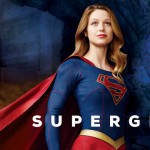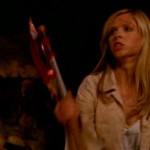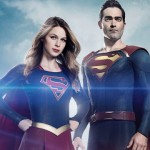Whenever I get into one of those moods where I think “I don’t want to live on this planet anymore,” I start watching my favorite sci-fi space drama. But unlike a lot of nerds, my favorite space drama isn’t Star Wars or Star Trek. It’s Firefly.
I got into Firefly long after it got cancelled. I just got done with Doctor Horrible and started watching Firefly since the main character was played by Nathan Fillion. (It’s also why I got into Castle.) Lucky for me, it was streaming online through Hulu and Netflix and is still streaming to this day. I hope to own the series and the film Serenity on DVD someday as well.
The reason I love the show so much is because it’s a show that puts characters first. The characters of Star Trek and Star Wars are definitely memorable, but at times, they feel more like archetypes or mythological beings than actual people. When I watched Firefly, I felt like I could belong and relate to these characters right away. But I also love Firefly because of all the shows created by Joss Whedon, it’s the series that looks into the ideas of morality the most.
But before I can talk about the show, lemme introduce you to the characters. Spoilers and fangirling ahead. You were warned.
Captain Malcolm Reynolds is a man of very strange morals. On the one hand, he doesn’t want anything to do with God. On the other hand, he gets into situations with a lot of risk and very little to no reward because he thinks it’s the right thing to do. He’s protective of his crew and will gladly ask for their help when necessary. The best example of that is in “War Stories,” when the crew comes to rescue him and Wash from Niska (the villain of the episode) and Mal gets into a fight with one of Niska’s henchmen. Zoe says “This is something the captain’s got to do for himself.” Mal disagrees, shouting, “No, it’s not!” cueing Zoe and the others to open fire. It’s hilarious! I also love his determination. He’ll never go down without a fight. Gotta love that in a Captain.
Zoe Washburne is the second-in-command, the cool, calm, and collected one of the team. She keeps Mal and Jayne from going over the edge and is great strategist in a hard situation. She’s loyal and protective, a true Mama Bear to the crew. What stands out about her is that she is a tower of brute strength in contrast to Whedon’s usual line of small girls with super powers. Plus she came up with the line of “Big Damn Heroes,” which is awesome. “War Stories” is also a great episode that showcases her character. But Zoe’s greatest moment in my opinion wasn’t anything from the show, but in Serenity. I dare not spoil the scene. But say the phrase “I am a leaf on the wind” in front of any Browncoat and I will guarantee you, they will start crying and ask “What’s wrong with you?!”
Wash is the pilot, the comic relief, and Joss’s avatar. His establishing scene in the pilot with the dinosaurs is basically him in a nutshell: hilarious and childlike one minute, but ready for business the next. His devotional love to his wife is heartwarming and endearing. I keep thinking of this lovely scene in “Shindig,” when instead of going out to the fancy party that Mal, Kaylee, and Inara are attending, Wash and Zoe are in their bunk doing what married people do and exchange in a bit of pillow talk. I wish I could’ve seen how they got together since in “Out of Gas,” it’s shown that they weren’t exactly a case of love at first sight. Also, Joss? You’re a bastard. But you already knew that.
Inara Serra is not and never was what you would call a “space hooker.” Fellow Browncoats and I compare her to a geisha: a woman who is trained to be intelligent, sociable, and alluring. She’s fanservice but she’s actually not objectified as often as one might expect. In fact, Mal points out in “Shindig” that he respects her as a person, but he does not like her profession. “Shindig” is my personal favorite episode because it shows the gamut of Inara’s job. (Well, really it’s my favorite because I’m a sucker for costumes, especially period-themed costumes. But I digress.) You see Inara belonging amongst the upper class, entertaining her client beyond just being a mistress, and teaching Mal how to fight with a sword. (Did I mention that I also love the episode because I’m also a sucker for swordfighting?) I also recommend watching “Heart of Gold” but I can never watch it alone. Mostly because I cried my heart out.
Jayne Cobb is the muscle of the team with the most ambiguous morals. Okay, in actuality, he probably has no morals. “Jaynestown” is the best example of that. He’s great in situations where he can work with his hands. He is the personification of the Id, moreso than McCoy because, well, his two loves are weapons and women. But in spite of his moral ambiguity, he wants to be a good man. He prefers to be honest and he’s got a lot of heart. Why else would he wear such a ridiculous hat? (Note to self: My brother needs to crochet that thing.)
Kaylee Frye is adorable. She is basically sunshine and rainbows and strawberries all wrapped up in a lovely mechanic-shaped package. Her love for the ship Serenity is best seen in “Bushwhacked” and “Out of Gas.” Going back to “Shindig,” Kaylee gets her share of fun at the party. First of all, she wears this bright pink layer cake of a dress that most Sweet Lolita cosplayers would give their left arm to have. (Myself included.) Secondly, she gets the attention of most of the men who aren’t on the dance floor just by being herself. She talks about her specialty: mechanics and engines, to the point that the men would prefer her conversation than just having a dance with her. I relate to Kaylee the most in spite of my own lack of mechanical expertise because I relate to her personality and her unrequited crush on Simon. We’ve all been there, girlfriend.
Dr. Simon Tam is a character I admire more than I can relate to. But he is also the character who has the most to lose. He sacrificed his privileged life and his job to protect his sister. He’s also the butt of a lot of jokes, especially in his conflicts with Jayne. His best episode is “Ariel,” but I personally love this scene from “Trash” when he has Jayne on an operating table and intimidates him in the calmest but borderline frightening way possible. Heck, put into a different context, you could probably drop the scene down in a horror movie.
River Tam is my second favorite character on the show. She has 2 of the most memorable lines in the series, she can be crazy one moment and mind-blowingly awesome the next. Watch Serenity to see just how awesome she is or the episode “Objects in Space.” All I can say is that Summer Glau needs to find a show to be in. She has the power to read minds, which can really be a deterrent because she can also feel the pain of those she reads. Interesting little trivia: Summer Glau has a background in ballet, so Summer Glau’s fighting style is best described as being a “dance battler.” Watch her dance, btw. She is amazing.
Last, but not least, we have Shepherd Book, the preacher with a mysterious past. Thank you, Joss Whedon, for not making Book the stereotype I hate the most. (I still can’t forgive you for Caleb though.) The origin of Book gets revealed in the comics and I agree with most of it except for the part that Book wasn’t his real name. I always imagined he was like Jayne, a mercenary who joined up with the Alliance with sort of this bloodthirsty manner, but seeing the consequences of the Alliance caused a crisis of faith and so he chose to become a Shepherd.
Morality is a funny thing in Firefly, and in Joss Whedon’s works overall. Out of all the Whedon oeuvre, Firefly is the one that deals with morality the most. Buffy has mostly a very secular black-and-white sense of morality that gets a lot more confusing later on. Angel has gray morals and has a pessimistic, borderline nihilistic tone about it. Dollhouse has the darkest tone when it comes to morals and the questions that get brought up aren’t exactly answered all that well. But Firefly and Serenity constantly ask questions about morality and ethics and try to define what exactly right and wrong mean. How? Well, keep reading the blog and you’ll find out.











